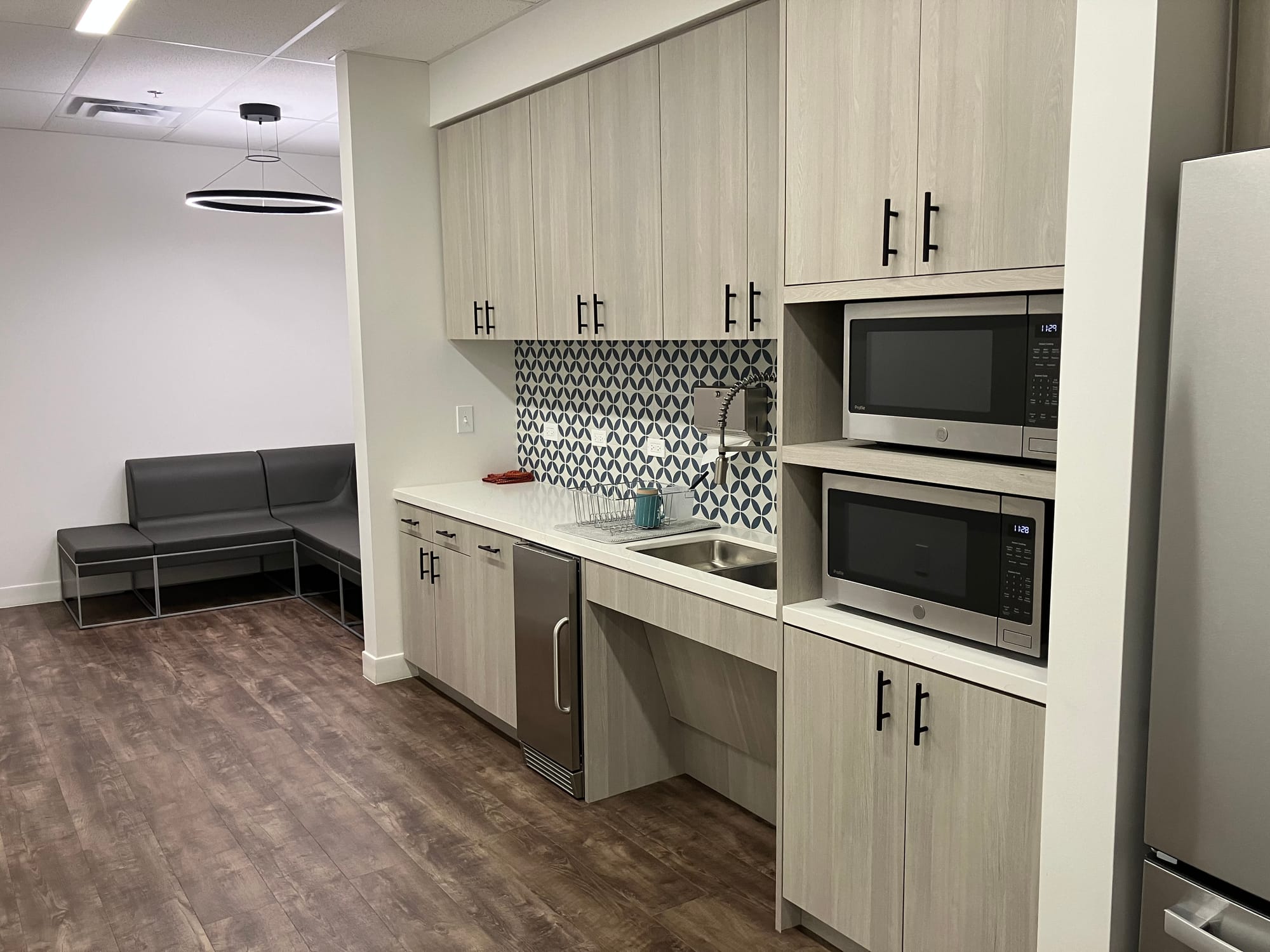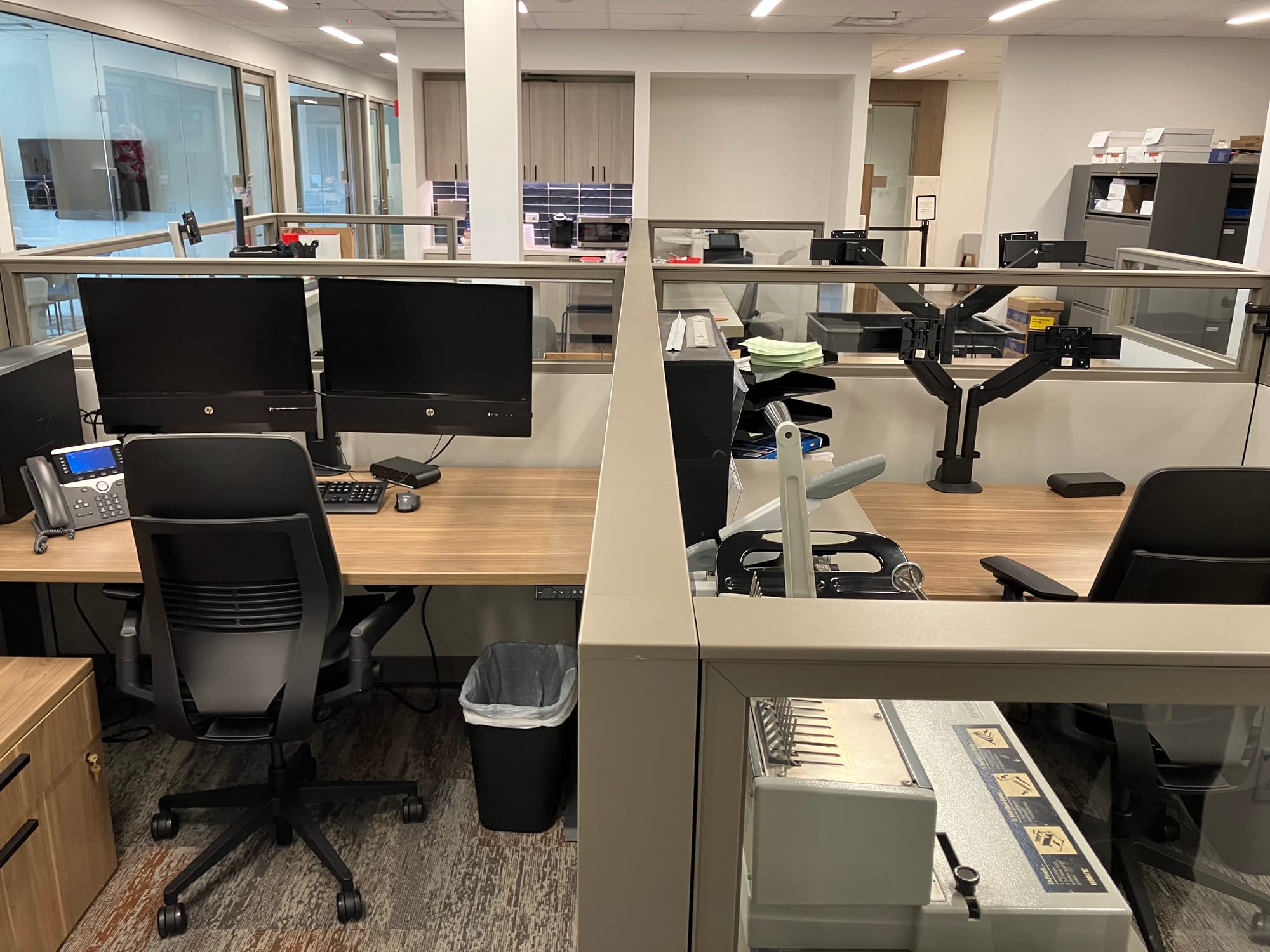Ellis County Central: Open for business

Ellis County Central has opened its doors, with patrons able to access the county’s tax office, veteran services, department of development, engineering, fire marshal, purchasing, and human resources at one convenient location in downtown Waxahachie. Officials plan a formal opening in the near future.
What was once the education building for First Baptist Church’s former location has been renovated into modern, functional office spaces for the county functions now on site. The three-story, 30,000-square-foot building, located at 302 N. Monroe St., was acquired by the county for about $1.3 million.
During a recent interview and tour, officials told In The Know Ellis that the purchase and subsequent renovation of the 1985 building saved taxpayers more than $10 million. A new building and accouterments would have carried a price tag of about $24 million, they said.
Patrons and staff alike have been pleased with the results, said Corey Rogan, who serves as public information strategist with County Judge Todd Little’s office.
“I haven’t had any negative feedback,” he said, noting that each department and office gained additional space, with the centralized location facilitating communication and collaboration. “As an example, at the historic courthouse, purchasing offices were split up between floors. … Everybody’s got what they need here."








Several views inside of Ellis County Central, which recently opened and houses the county's tax, veteran services, development, engineering, fire marshal, purchasing, and human resources offices and departments.
Ellis County Central layout
The building’s first floor (ground level) features a main entrance that allows access to all three floors. Off the main foyer are public stairs and elevators to the upper floors. Similar to the Courts and Administration Building, there are also staff-only accessible stairs and elevators. Restrooms are located throughout the facility, along with several meeting and break areas for county staff use.
The tax office, which had been located on the east side of the county’s Courts and Administration Building, has been reconfigured to facilitate quicker in-and-outs for patrons, Rogan said. People continue to sign in via a kiosk, which first assigns them a number, and then a walkup station, which is announced via intercom and also displayed on several screens. Stations allowing access for wheelchairs or for those who need to sit while conducting their transactions are also available.
The county’s veteran services office, which features a large mural honoring the military branches, is accessed via a separate entrance on the ground level and provides its users with a quieter space and more privacy, Rogan said.
The second floor houses the county’s department of development, engineering, and fire marshal offices, while the third floor is home to the county’s purchasing and human resources departments.
“With the amount of space we have, it feels like we can function,” said Charlotte Wallace, a human resources staff member. “And, we’ve got room to grow.”
Pointing out her department’s amenities, which include ample storage, document workspaces, and several rooms where onboarding and training can be held, she said, “We’re happy and thankful for the space.”
The third floor is also where the county’s new training/emergency operation center is situated.
“The county now has its own unified command post in the event of an emergency or disaster,” Rogan said. “We can also host trainings in here.”
Emerging Ellis County 2050
Rogan noted that Ellis County Central is but one of the projects called for in the Emerging Ellis County 2050 master plan for facilities, which looks to address service needs arising from the county’s growth in population.
The plan, which can be downloaded here, indicates an average annual growth rate of 3.34% for Ellis County, which translates to more than 6,700 people moving in each year. Projections have Ellis County hitting the half-million mark in population by 2050.
Written by Jo Ann Livingston/ITKE.

